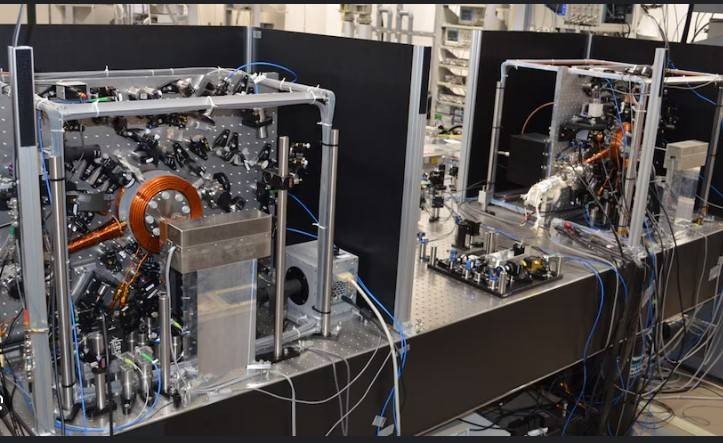
Japanese precision-instrument maker Shimadzu Corporation has unveiled what they claim is the world's most accurate commercially available clock. The Aether clock OC 020, priced at $3.4 million, boasts an astonishing precision rate - it will deviate by just one second over 10 billion years.
Named after the ancient concept of ethereal substance, this breakthrough in timekeeping technology stands about the size of two small refrigerators and weighs approximately 200 kilograms. The clock represents a major advancement over traditional cesium atomic clocks, offering accuracy that is over 100 times superior.
The clock's exceptional precision stems from its optical-lattice technology, developed in collaboration with Professor Hidetoshi Katori of the University of Tokyo. Unlike conventional atomic clocks that use microwaves, this system employs light at much higher frequencies and creates an "egg-carton-like" laser array to trap ultracold atoms. This innovative approach eliminates the Doppler effect - a common challenge in precise timekeeping where atomic motion affects frequency measurements.
To achieve such remarkable accuracy, the clock operates within a low-temperature blackbody radiation shield that minimizes thermal interference. The system has been engineered to remain stable despite environmental changes, maintaining its incredible precision.
The technology has already demonstrated practical applications. In a field test at Tokyo Skytree tower, two clocks placed at different heights confirmed Einstein's theory of relativity by measuring how time passes more quickly at higher altitudes where gravity is weaker.
Shimadzu aims to sell 10 units over three years, targeting applications in geological monitoring and earthquake prediction. The clock's precision allows for centimeter-scale measurements of Earth's plate movements and vertical crustal shifts during volcanic activity.
This technological breakthrough may also contribute to redefining the international standard for measuring time, with the International Bureau of Weights and Measures expected to update the definition of the second by 2030.
"Optical-lattice clocks hold great potential in earthquake prediction and other such fields," stated Naohiro Nishimoto, director of Shimadzu's Technology Research Laboratory, highlighting the broader implications of this groundbreaking technology.